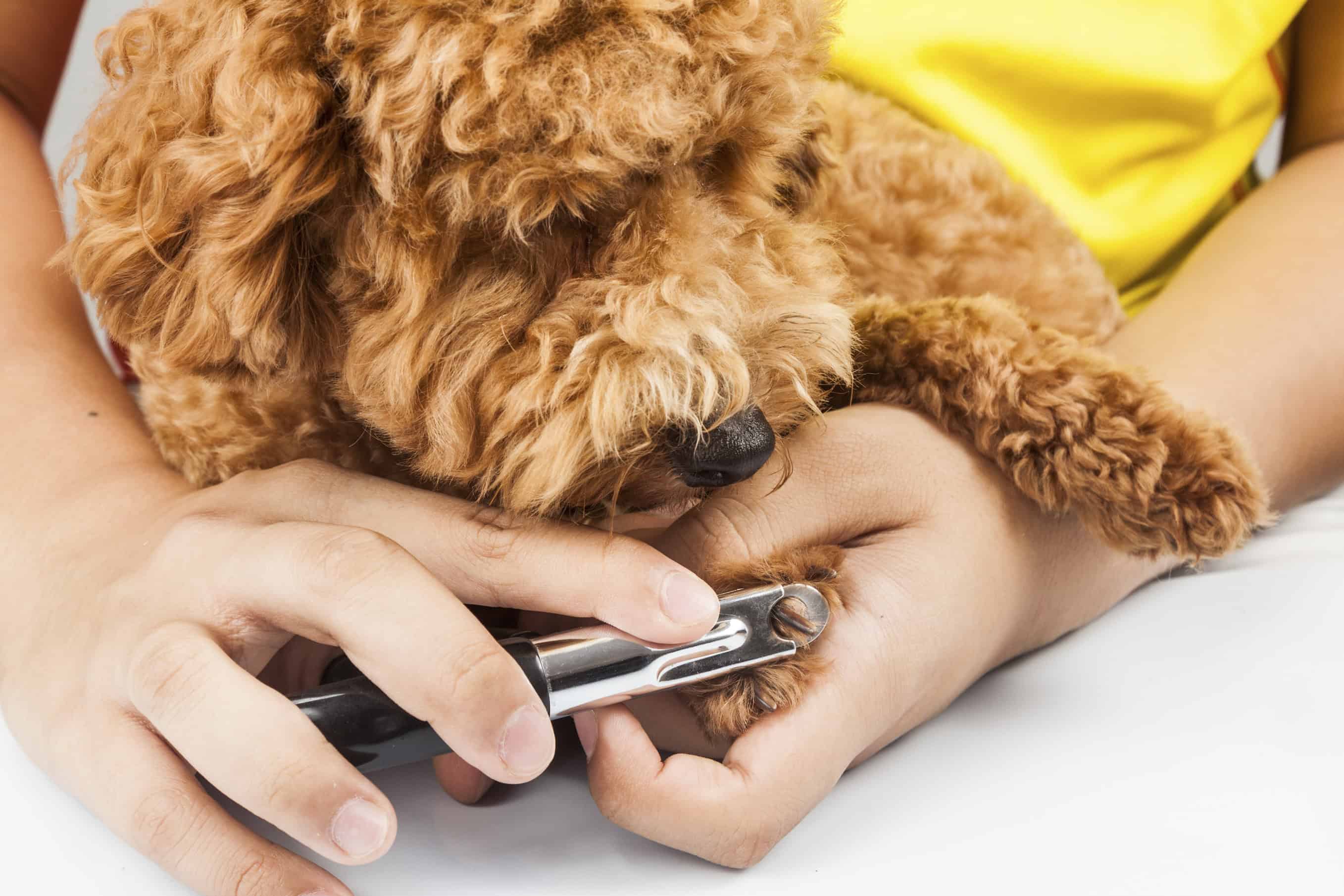Fancy Feet: Pet Nail Trimming Basics
 Have you looked at your pet’s nails lately? Nails that are too long can not only make walking uncomfortable for your pet, it can actually contribute to knee and hip problems by forcing your pet to walk on the outside of his or her paw pads.
Have you looked at your pet’s nails lately? Nails that are too long can not only make walking uncomfortable for your pet, it can actually contribute to knee and hip problems by forcing your pet to walk on the outside of his or her paw pads.
Many pet owners are understandably apprehensive about trimming their pet’s nails. Because each nail is home to a blood vessel, also known as the “quick”, it’s easy to accidentally hurt your pet while trimming. This can create a pretty negative experience for the both of you, and make you and your pet apprehensive to try again.
Because keeping your pet’s nails short is so important, we have put together a guide on pet nail trimming aimed at easing you into the process, while keeping your sanity in check!
Pet Nail Trimming 101
Before you begin, you’ll need to choose a pair of nail clippers. There are two basic varieties: scissors and guillotine. Both work well, so select whichever you are most comfortable with. Alternatively, some pets prefer to have their nails ground down using an electric grinding tool.
Now for the fun part:
- Spread your pet’s toes, inspect for dirt and debris between the toes and in the pads.
- Take hold of your pet’s toe, and trim a small length of nail to begin. Make sure that you cut the nail from top to bottom at a slight angle (rather than from side to side) so as to maintain the natural curve of the nail.
- Cut a little bit of nail at a time until you can see the beginning of a nail-colored circle on the cut surface. The circle indicates that the quick is near, so stop here.
- Be especially careful if your pet has black nails, as the quick is much more difficult to see.
- Some dogs have an extra nail higher up on the leg, called a dewclaw, which can be problematic if it gets too long, so be sure to trim that as well.
- Doing weekly trims is much easier than waiting and having to trim a lot off in one sitting. If your pet’s nails are very long, it may be best to start with a professional nail trim, and then maintain the nails weekly at home.
What To Do If You Cut The Quick
If you accidentally cut your pet’s quick, don’t panic. He or she will probably yelp and struggle to get away, and the nail will bleed. End the trimming session here, but not before applying cornstarch or styptic powder to the wound to stop the bleeding. Give us a call if the bleeding doesn’t subside within a reasonable amount of time.
Help For Anxious Pets
Some pets react negatively to having their nails trimmed, whether due to a previous negative nail trimming experience, or because he or she just doesn’t like their feet touched. Help your pet feel more comfortable having his or her paws handled with the following tips:
- Stroke each of your pet’s legs, and gently press on each toe separately.
- Reward your pet with treats and praise after each leg.
- After a week or two of daily leg and foot massage, your pet should feel more comfortable having his or her nails groomed.
- Enlist the help of an assistant to help hold your pet still for the trim.
- Continue to offer praise and treats as long as your pet is tolerating the trimming process.
- Exercise your pet prior to grooming. A tired pet is less anxious and easier to hold down.
If you have any questions about pet nail trimming, please give us a call!

